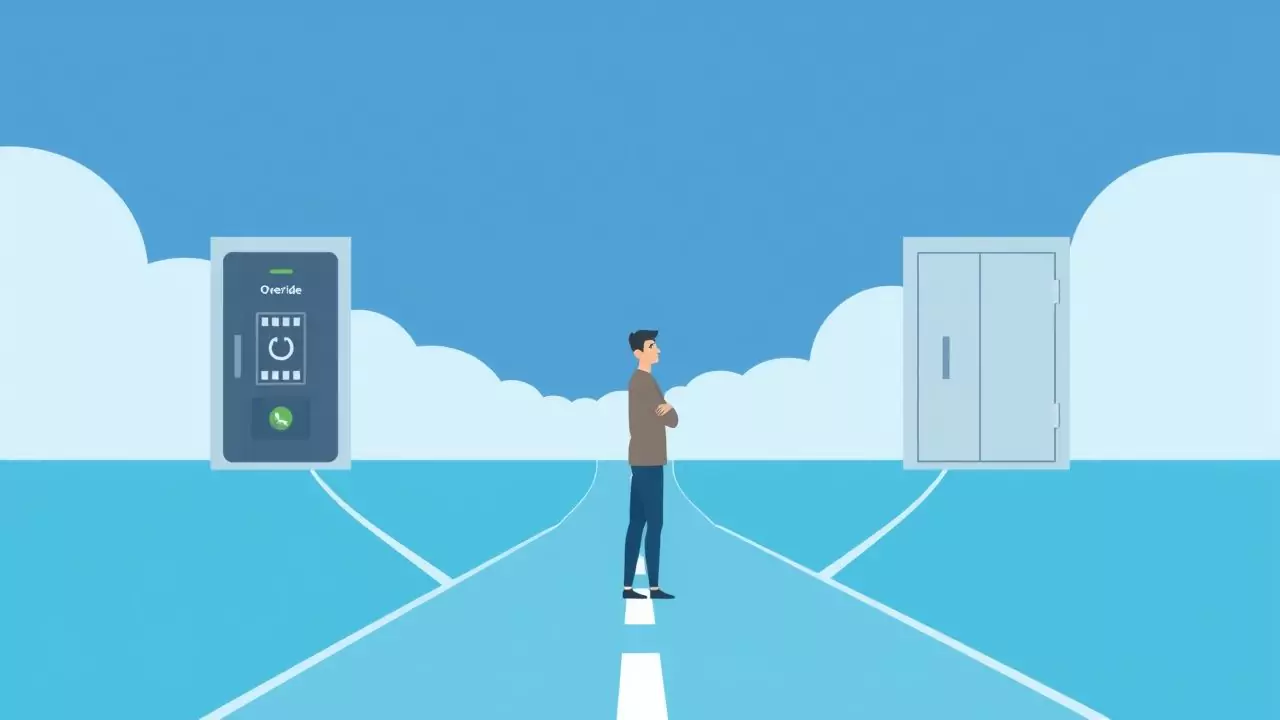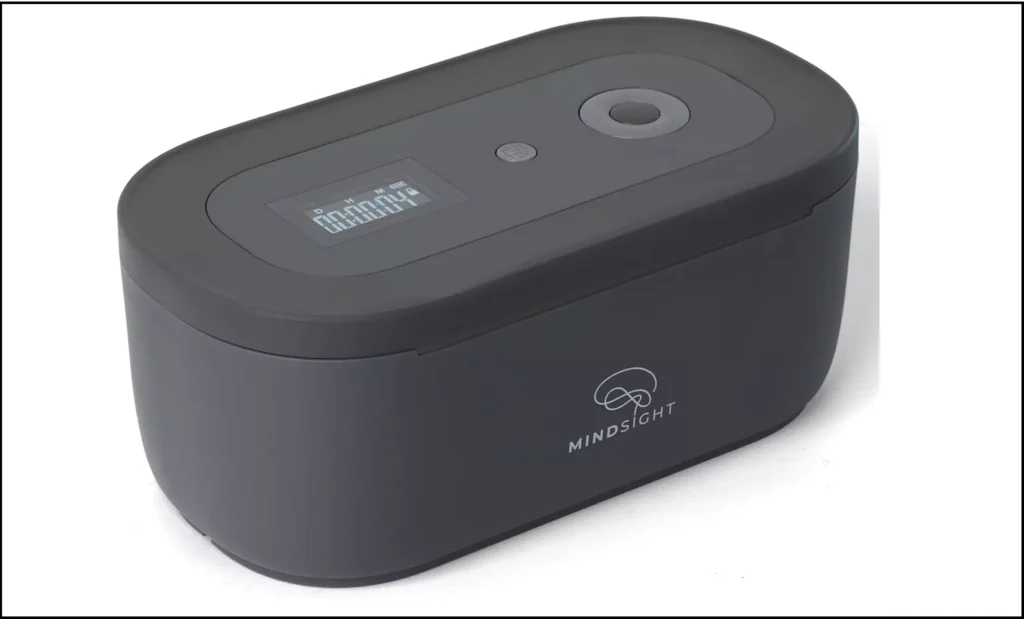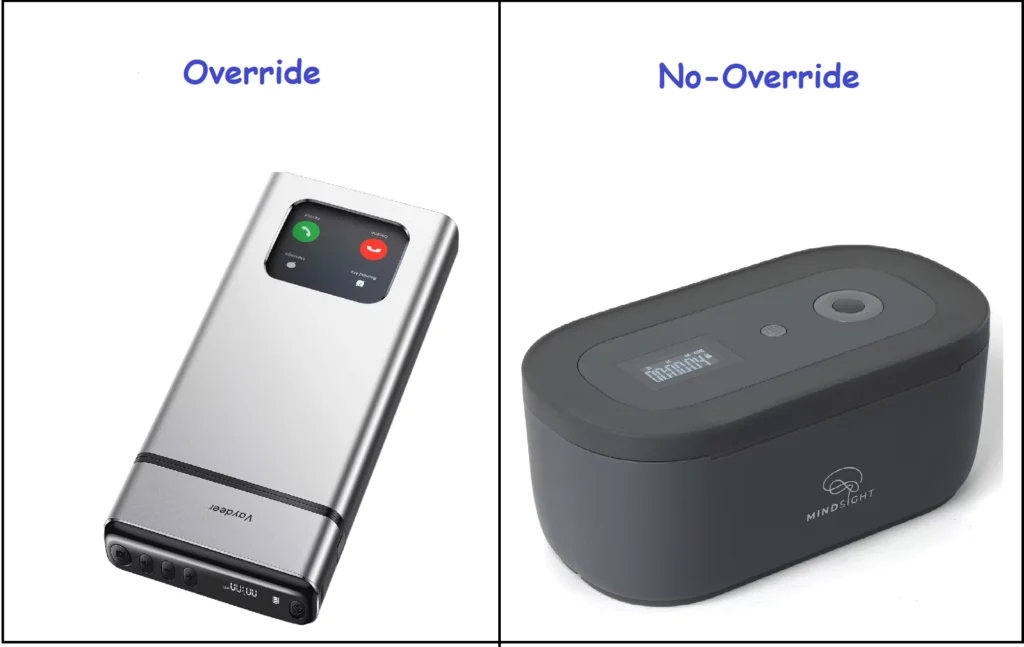Let’s cut to the chase: you’re tired of your phone running your life and you’re considering a lock box to regain control. But here’s the crucial question: should you get one with an emergency override feature, or go full fortress mode with no escape hatch?

The right choice isn’t about features; it’s about understanding your own habits and what will actually create lasting change.
Quick Answer: For beginners, an override lock box is best for easing into the habit without causing anxiety. For anyone who has tried and failed to limit their screen time before, a no override lock box is the only way to build real discipline by removing the temptation to cheat.
What’s the Real Difference? Override vs No Override
Before we dive in, let’s get our terms straight.
- A lock box with an override gives you an emergency code or button sequence to unlock the box before your timer runs out. Think of it as a safety net.
- A no override lock box means exactly what it sounds like. Once that timer starts, you are locked out until it hits zero. No codes, no buttons, no way in except waiting or breaking it.
This isn’t just a technical decision. It’s a psychological one that will define your journey to changing your habits.
The Override Lock Box: A Digital Safety Net
This type of lock box is often seen as the more approachable, user-friendly option, especially for those new to digital detox tools. Let’s break down how it functions and where it shines, and where it falls short.

How Override Features Work
Most override features are similar. You set your timer but have an emergency access method, like a specific button combination. For example, some models let you press a button 10 times to unlock it, but limit you to only 5 emergency uses in total. The idea is to provide discipline with a dose of peace of mind.
The Pros: Why You Might Want an Override
- Peace of Mind for Emergencies: If you’re on-call for work, have elderly parents, or children at school, the override eliminates the anxiety of being unreachable.
- Perfect for Beginners: An override feature works like training wheels. It lets you build the habit of locking your phone away without the intense pressure of total commitment.
- Flexibility for Families: Parents can manage a household’s screen time rules while still having access for genuine emergencies.
The Cons: The “Emergency” Loophole
Here’s where it gets uncomfortable. That little voice that convinces you to “just check one thing” doesn’t disappear. It just gets more creative.
- The Rationalization Game: “This text might be urgent.” “What if my boss needs me?” Soon, your “emergency” feature becomes your regular exit strategy, defeating the entire purpose.
- Building a Crutch, Not Discipline: Real habit change happens when you learn to sit with discomfort. An easy way out prevents you from building the mental muscle of delayed gratification.
The No Override Lock Box: The Digital Fortress
If the override box is a safety net, the no-override version is a commitment device. It’s designed for one purpose: to remove any and all temptation to cheat by making early access impossible.

How “Fortress Mode” Works
This is simple: you set the timer, and there is no way to get in early. Some manufacturers take this so seriously that the only way to get an emergency code is to contact their customer support directly. This approach is built on a core principle: real change happens when you remove the option to quit.
The Pros: Why It Forces Real Change
- Forces Genuine Growth: When you can’t escape, you’re forced to confront the boredom, anxiety, or FOMO that drives your phone habit. You learn to process these feelings instead of escaping them.
- Eliminates Decision Fatigue: There’s no mental energy wasted debating if a situation is an “emergency.” The decision is already made. You wait.
- Builds Real Self-Trust: Every time you successfully wait out the timer, you prove to yourself that you can follow through on your commitments.
The Cons: The Reality of No Escape
- Can Trigger Anxiety: For some, being completely cut off is a source of genuine anxiety. If you’re prone to panic, this may be too intense to start with.
- Requires a Plan for Real Emergencies: While most “emergencies” aren’t, true ones do happen. You need to have a plan (like a backup phone or letting family know your schedule).
- Demands You Think Ahead: You can’t impulsively lock your phone away. You must consider your schedule and responsibilities first.
So, Which Lock Box Should You Choose?

Here’s the straight talk based on user experiences and behavioral psychology.
Choose an Override Lock Box If You:
- Are on-call for work or are a primary caregiver.
- Experience severe anxiety about being unreachable.
- Are just starting to build phone-free habits.
- Need flexibility for a family or a varying schedule.
👉 Example: Phone Lock Box with Override.
Choose a No Override Lock Box If You:
- Have a history of “cheating” on screen time goals.
- Want to break a genuine phone addiction.
- Know that small interruptions are hurting your focus and performance.
- Are ready to commit to building serious self-discipline.
👉 Example: Phone Lock Box with No-Override.
The Bottom Line: Our Honest Recommendation
The perfect lock box won’t fix a commitment problem. The real question is: Which mode matches your current level of self-discipline?

- For Most People: Start with an Override Box. Use it for 30 days and keep a log. Every time you use the override, write down why. If you find that 90% of your “emergencies” weren’t urgent, you’ve proven to yourself that you need to graduate.
- For Serial Cheaters: Go Straight to No Override. If you already know you make excuses and bend the rules, an override feature is a trap. Fortress mode is the training ground where you’ll finally build the mental strength you’re looking for.
Ultimately, the goal is to build the psychological muscle to use your phone intentionally. If you’re ready to find the right tool for the job, you can see our full breakdown in our guide to The 9 Best Phone Lock Box Timers.
Choose the mode that meets you where you are right now, use it consistently, and be honest with yourself about the results. That’s how real change happens.

